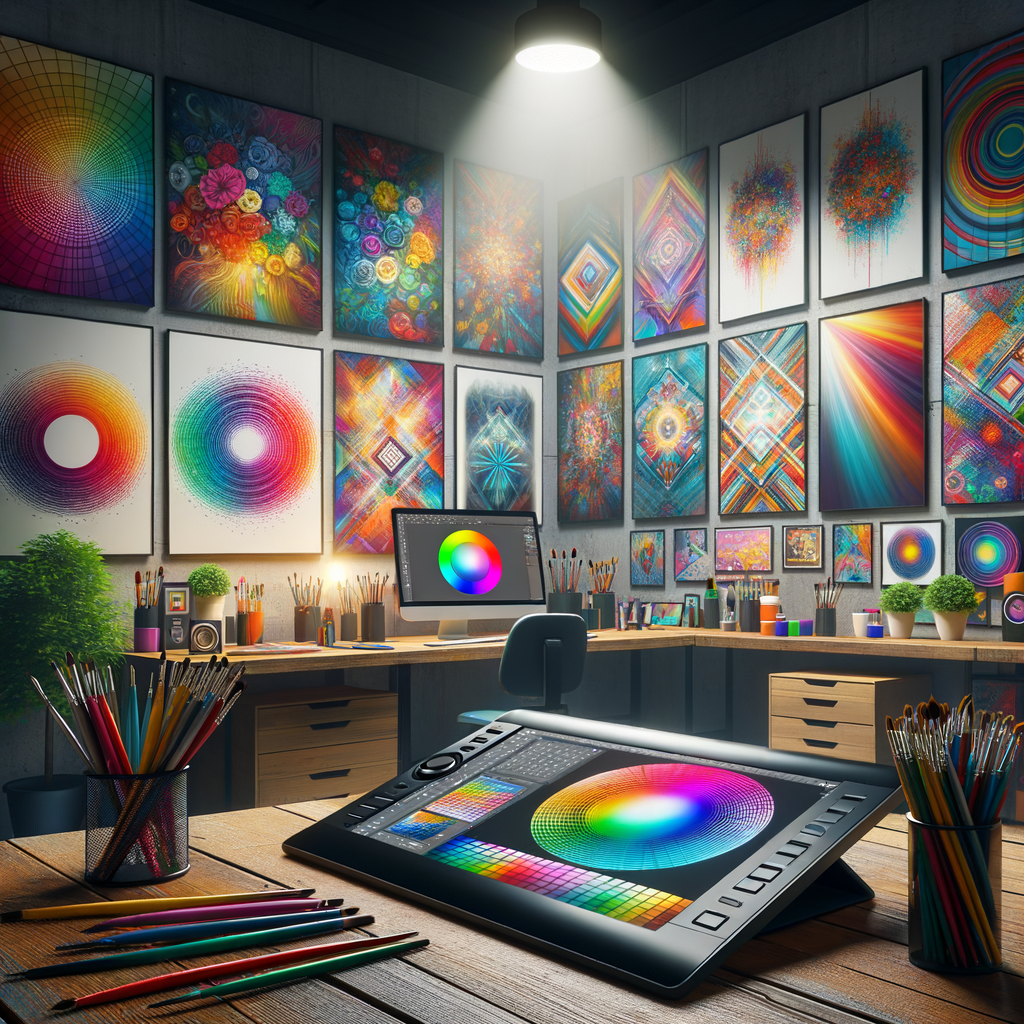
Understanding color is essential for any artist looking to create visually appealing works. In this comprehensive guide, we will explore the principles of color theory, why it is important for digital art, and how to effectively apply these concepts to enhance your artistic creations.
Color theory is a vast and complex subject, but at its core, it revolves around the relationships and interactions between colors. Whether you are a beginner or a seasoned artist, mastering color can elevate your work and set it apart. In this article, we will cover everything from the basics of color theory to advanced techniques that will help you harness the power of color in your art.
1. The Basics of Color Theory
Color theory encompasses a variety of principles and ideas that artists can use to make informed decisions about their color choices. At the foundation of color theory are the primary colors: red, blue, and yellow. These colors cannot be created by mixing other colors and serve as the building blocks for all other colors. By combining primary colors, you can create secondary colors: green, orange, and purple. Tertiary colors are formed by mixing primary and secondary colors. Understanding these relationships is the first step in mastering color theory.
2. The Color Wheel
A color wheel is a visual representation of colors arranged in a circular format. The color wheel has a variety of applications in art, including helping artists understand complementary colors, analogous colors, and more. Complementary colors are located opposite each other on the color wheel and, when used together, create strong contrast and visual interest. Conversely, analogous colors are next to each other on the wheel and work harmoniously to create a sense of unity in artwork.
3. Color Harmony
Color harmony refers to the pleasing arrangement of colors in an artwork. There are several types of color harmonies that artists can explore:
- Monochromatic: This harmony uses variations in lightness and saturation of a single color.
- Complementary: Utilizes colors from opposite sides of the color wheel for contrast.
- Analogous: Employs colors that are next to each other on the wheel for a cohesive look.
- Triadic: Features three colors that are evenly spaced on the color wheel for a vibrant palette.
4. Color Temperature
Colors can be categorized as warm or cool, which can significantly affect the mood and perception of your artwork. Warm colors (reds, oranges, yellows) tend to advance in a composition, while cool colors (blues, greens, purples) recede, creating a sense of depth. Understanding color temperature can help you create dimensionality in your work.
5. Psychological Effects of Color
Colors can evoke strong emotional responses and can play a crucial role in conveying messages in your artwork. For example:
- Red: Passion, energy, urgency.
- Blue: Calm, trust, professionalism.
- Yellow: Happiness, optimism, creativity.
- Green: Growth, healing, nature.
- Purple: Luxury, mystery, spirituality.
Incorporating color psychology into your work can help you communicate with your audience on a deeper emotional level.
6. Creating a Color Palette
Once you understand the fundamentals of color theory, you can begin creating your own color palettes. A strong color palette is essential for unifying your artwork and enhancing its visual impact. Here are some tips for creating effective color palettes:
- Start with a dominant color that reflects the mood you want to convey.
- Add complementary or analogous colors to create harmony and interest.
- Use neutral colors to balance the palette and allow the colors to stand out.
- Experiment with different shades and tints to find variations that work well together.
7. Tools for Choosing Colors
There are several tools available to help artists choose and create color palettes:
- Digital Tools: Applications like Adobe Color and Coolors allow you to create and save color palettes easily.
- Color Wheel Apps: Mobile apps can help you understand color relationships and generate palettes on the go.
- Physical Tools: Traditional artists can use color swatches, paint chips, or color wheels for inspiration.
8. Practical Applications in Digital Art
Now that you have a firm grasp of color theory, it’s time to apply these concepts to your digital artwork:
- Use layers to experiment with color overlays and achieve various effects.
- Take advantage of blending modes to discover unique color interactions.
- Utilize gradient tools to create smooth transitions between colors.
- Pay attention to lighting and shading to enhance the three-dimensionality of your subjects.
9. Common Mistakes to Avoid
As artists, we can often make mistakes when it comes to color choices. Here are some common pitfalls to watch out for:
- Relying too heavily on overly bright colors, which can be overwhelming.
- Neglecting the importance of balance and harmony in color palettes.
- Ignoring the impact of color temperature on composition.
- Focusing too much on color without considering other elements, such as composition and drawing.
10. Conclusion
Mastering color theory is an ongoing journey for any artist. By familiarizing yourself with the core principles and practicing your color choices, you will see a significant improvement in your work. Remember that color is a powerful tool and can significantly impact the viewer's experience with your art. Keep experimenting and finding ways to incorporate color in innovative ways to tell your creative story.

